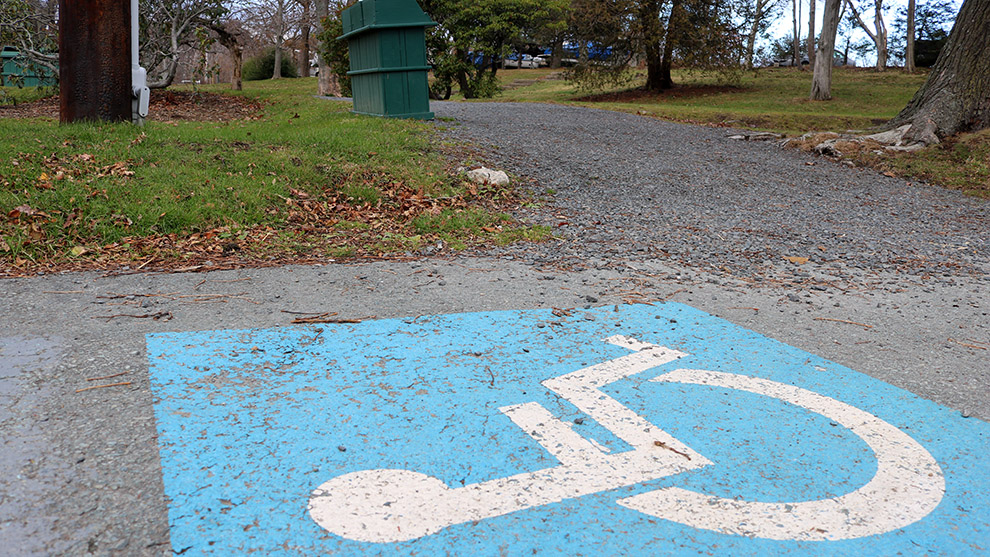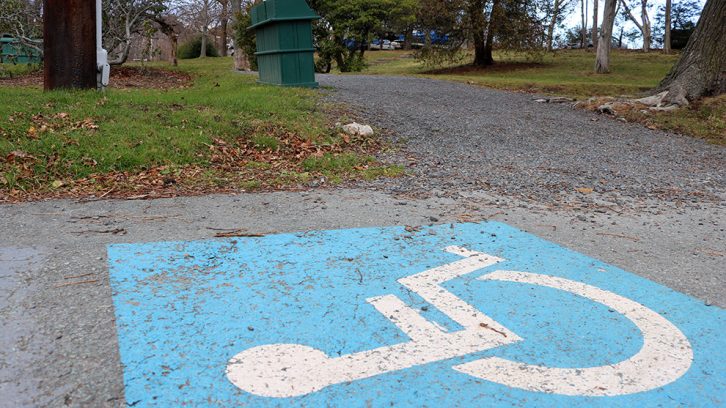Accessibility
HRM reassessing criteria for accessible trails
The Accessibility Act and a potential new HRM mobility plan are shaking things up for policymakers

caption
A trailhead at Conrose Park in Halifax.
caption
A trailhead at Conrose Park in Halifax.There are plenty of trails in the Halifax Regional Municipality, but at this point, there’s no way of knowing how many are accessible.
Recently, information on the HRM’s open data website claimed 665 trails were accessible and 1,270 were not, but the data was removed after The Signal questioned its source.
A note on the website now says the “quality and completeness is in question” and that the data will be updated “in the near future.”
“It think it’s really a worthwhile dataset to put out there, what is and is not accessible, but it should have a little more rigour,” says David MacIsaac, active transportation supervisor for the HRM. Related stories
MacIsaac says that he and other HRM employees were unaware that the data existed. When made aware of it, he had concerns with the trails that were deemed accessible, so it was removed.
“Right now we don’t have a defined and approved and vetted set of criteria,” says MacIsaac.
‘The last frontier’
Nova Scotia’s newly established Accessibility Directorate has the mandate of working with municipalities to create new accessibility standards, and would have a say in setting the criteria for accessible trails.
“It would be interesting for the HRM to do an audit of the trails that are accessible and could be made accessible,” says Gerry Post, the directorate’s first executive director, appointed in June.
Post sees trails, beaches and wilderness areas as “the last frontier when it comes to accessibility,” and says it’s impractical to make all of Nova Scotia’s trails accessible.
“It depends on the topography, that’s the main issue, and we don’t want to disturb the environment either,” says Post.
Before talking to MacIsaac, The Signal talked to Post, who was also unaware of the HRM’s accessible trail data.
Post, who uses a wheelchair, says the surface and slope of the trails are the two biggest things taken into account when considering a trail’s accessibility for people with mobility issues. He also says visual and hearing impairments should be taken into account.
“They may want the electronic wave length system put in place, and there’s various tools you can use with smartphones,” says Post. “So it depends on the disabilities.”
‘Ready to make changes’
This current lack of clarity regarding criteria is due, in part, to potential changes at the municipal level and recent legislative changes at the provincial level.
In the HRM, a recent staff report presented to the regional council recommended approving a new Integrated Mobility Plan for the HRM. If approved, the plan would set into motion a new HRM Municipal Accessibility Plan.
MacIsaac says that would be a chance to update walking and biking facilities to AAA, which stands for All Ages and Abilities. Likewise, Nova Scotia’s Accessibility Act, also known as Bill 59, which was passed in April, resolves to make Nova Scotia accessible by 2030.
“Right now my understanding is that Bill 59 is more of a framework,” says MacIsaac who is currently awaiting more direction on how to put it into action.
Post’s Accessibility Directorate was a result of the Accessibility Act, and both are still in their early stages of implementation.
MacIsaac says that his office is currently working with Post’s office to implement the Act and make active transportation more accessible in the HRM.
“We know it’s there and we’re getting ready to make changes as directed,” says MacIsaac.


S
Susan Cook